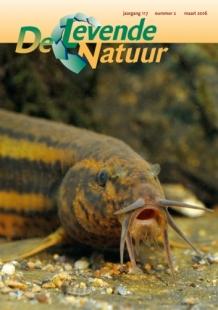De Levende Natuur nummer 2 van 2016 (English summary)
Afbeelding

Development of island tails
A.V. de Groot, A.P. Oost, R.M. Veeneklaas, E.J. Lammerts, W.E. van Duin, B.K. van Wesenbeeck & O.G. Bos
Large parts of the island tails of the Wadden Islands (i.e. the downdrift, eastern parts that are open to the sea) are ageing and have lost dynamics. Undisturbed, the development of island tails consists of four phases, from a bare beach plain on which the abiotic processes dominate, through the interaction between biota and abiotics, to the final stage in which the biotic processes dominate. Human alterations (e.g. sand-drift dikes and embankments) have reduced natural dynamics and increased the speed of succession. On the long term this has reduced the diversity in landforms, vegetation types and successional stages. Island tails are (potentially) some of the most dynamic parts of the Dutch coast. It seems possible to introduce more dynamics through active management. There are however limits to the effects that can be expected, as the geomorphological processes from the initial phases, that cause landscape variation, cannot always be restored on a large scale in later phases of the succession.
The Wall brown: how do we reverse the decline of a ‘common species’?
A. Stip & M.F. Wallis de Vries
Populations of common invertebrate species such as the Wall brown (Lasiommata megera) are under severe pressure. Within twenty years, 98% of the Dutch population disappeared and in the rest of Western Europe trends are strongly declining as well. This paper presents new insights into the ecology of the Wall brown and possible factors driving its decline. Besides habitat loss, microclimatic cooling is identified to have negative impact on larval habitat quality. Based on these findings, we propose guidelines for the management of grassland habitats, which will help securing the future of the Wall brown and other common grassland insects.
Towards an ecologically sound Markermeer via three in-situ experiments
A. Bak, D. Wielakker, K. Didderen, R.C. Fijn & W. Lengkeek
The ecological state of one of the largest freshwater lakes in The Netherlands, lake Markermeer, has shown a negative trend over the past decades. Turbid water inhibits the development of submersed vegetation, invertebrates and phytoplankton. Additionally the shores of the Markermeer are steep and man-made with no transitional zones and with little wetland vegetation. Places for fish to spawn, shelter and feed are limited and there is not much in the way of suitable breeding and resting habitat for birds. Rijkswaterstaat (Ministry of Infrastructure and Environment) through the innovative research program Natuurlijk Markermeer-IJmeer (NMIJ) is looking for innovative habitat restoration measures to improve the general habitat quality of lake Markermeer and to this end Bureau Waardenburg has carried out three experiments: the Marker Kwelderwerken (the development of natural mud flats and bank vegetation with silt from the water column), the Marker Stapsteen (a stepping stone between the open water and hinterland with breeding habitat for birds and underwater habitat for fish and mussels), and reef balls (to create a reef of Dreissena mussels with hiding and feeding opportunities for fish). All three experiments yielded interesting data and achieved their goals. Wetland vegetation developed fairly soon after the installation of the Kwelderwerken. Tens of pairs of Common Terns successfully raised chicks on the Stapsteen, and fish and mussels used the structures under water. Similarly, the reef balls were colonized by Dreissena mussels and functioned as feeding and sheltering habitat for several species of fish. This article provides insight in potential future applications of principles tested within the three experiments.
Weather loach, tricky to catch
Th. de Jong & K. van Bochove
Field research was performed to investigate which techniques are most effective for monitoring European weather loach (Misgurnus fossilis). This rare, elusive species is protected in The Netherlands. Therefore, it is important to have an efficient monitoring tool. This study estimated the detection probability using eDNA, electrofishing direct current (DC), electrofishing alternating current (AC) and dip netting. In nine ditches we laid out three sections of 50 meters. Each section was sampled once with each of the conventional techniques. eDNA was sampled simultaneously. The detection probabilities per section and per ditch respectively were: eDNA (95%/100%), DC-electrofishing (63%/87,5%), AC-electrofishing (32%/ 62,5%) and dip netting (6%, 12,5%). Therefore we conclude that DC-electrofishing and eDNA are both most useful for monitoring the European weather loach. A disadvantage of using eDNA is that no conclusion can be drawn on population density, although we found a remarkable strong correlation between eDNA concentration and the amount of loaches caught.

